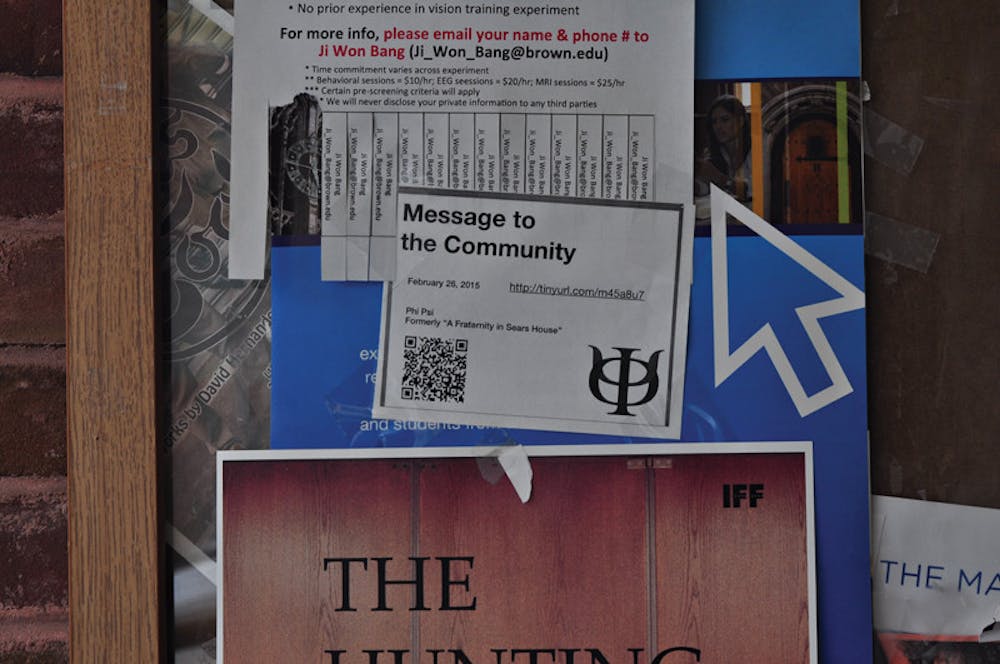Over the last week, Phi Kappa Psi has blanketed campus with flyers bearing a scannable barcode that links to a letter detailing evidence from its recent misconduct case.
In that letter, the fraternity falsely asserts that laboratory results were “conclusively negative” for a hair test on one of the two female students who reported being given the date-rape drug GHB at an October party hosted by the fraternity.
Multiple documents reviewed by The Herald show that neither the University nor an independent medical expert ever reached such a determination.
The toxicology report from the laboratory that conducted the test originally found natural, not elevated, levels of GHB in the hair sample. But several other documents have raised concerns about the test’s methodology, casting doubts on what conclusions, if any, can be drawn from the test.
Phi Psi declined to comment for this story.
After a University hearing in response to the GHB allegations, Phi Psi was disciplined in mid-January for fostering an unsafe environment and subsequently received a four-year suspension.
On Feb. 21, the University modified the sanctions, granting the fraternity the right to petition for reinstatement after two-and-a-half years in light of a urine test originally deemed positive but later found to be inconclusive.
In response, Phi Psi wrote a letter expressing frustration with the University’s lack of transparency and calling for the release of all evidence and documents related to its hearing. The letter specifically addresses the certainty of a GHB hair test, the results of which were never made public by the University.
The fraternity originally sent the letter to The Herald, which declined to publish it Feb. 23 without additional information to back up its assertions. The Providence Journal published the letter on its website later that day.
Members of the fraternity have distributed the letter widely in high-traffic areas around campus in recent days.
The Carlson Company, which produced the lab report, sent the sample to ExperTox, a Texas-based laboratory, to perform the test.
The University hired Guy Vallaro, director of the division of scientific services at Connecticut’s Department of Emergency Services and Public Protection, to independently review test results related to Phi Psi’s case.
A major concern raised by multiple parties about the Carlson Company’s report was the process by which the hair was tested.
Since recently ingested substances appear in higher concentrations in hair closest to the scalp, measuring the strand of hair by section — a process called segmenting — is “essential” to reveal any spikes in GHB levels, Vallaro wrote Feb. 5 in his report to Margaret Klawunn, vice president for campus life and student services.
“There is no indication that the hair was segmented prior to analysis,” Vallaro wrote.
A letter reviewed by The Herald describes interactions between Unab Khan, medical director at Health Services, and Ernest Lykissa, laboratory director at ExperTox, in early January. Lykissa was “adamant” in defending the accuracy of the test results and his procedures, according to the letter.
But in a separate Jan. 12 letter to Lykissa, Khan expressed doubts about the validity of those methods. “You are very confident that the results are negative even though the whole hair shaft was tested for GHB … instead of a particular area that would have corresponded to the time of the alleged event,” she wrote. “You mentioned that averaging the result of the whole hair shaft could give false negative results.”
Khan also raised questions about whether Lykissa recorded GHB levels for each segment, as opposed to the full strand, and whether the Carlson Company has the requisite certifications to “report segmented levels of GHB in hair tests.”
Khan could not be reached for comment by press time.
The Herald sought comment from Klawunn for this story early Sunday morning. She did not comment. On Sunday evening, the University sent a community-wide email addressing the hair test and other aspects of the case.
The University “received inconsistent accounts from the laboratory about how the test was conducted, leading to concerns about the reliability of the information from the laboratory,” the email stated.
The email also reiterated that “a failure to positively identify the presence of exogenous GHB does not prove that GHB or another drug was not ingested.”
- With additional reporting by Michael Dubin





